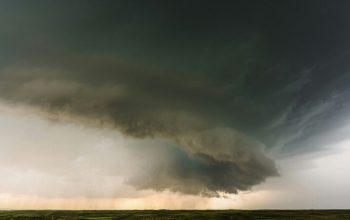As mentioned in a previous column, I’ve got my Paramount Plus subscription running right now for the near exclusive purpose of watching “Star Trek: Strange New Worlds.” Which is fantastic and if you’ve ever liked Star Trek you owe it to yourself to give it a watch.
Still, wanting to get out of the most Star Trek bang for my subscription buck, I decided it was time to finally do a rewatch of “Star Trek: Voyager,” the third and final show in the franchise defining 80-90s era of Star Trek.
While I gave “Star Trek: The Next Generation” and “Star Trek: Deep Space Nine” a relatively recent rewatch a few years back due to a broken leg, I haven’t seen “Star Trek: Voyager” since it first aired on Channel 3 late at night on Saturdays back when I was a kid.
It’s been an interesting experience, watching the show again with adult eyes. Not only do I understand things that flew over my head the first time around, but I also see how television itself was so much more different than it is today.
One of the first things that stood out to me was how the old 4:3 aspect ratio really dictated how scenes were sometimes shot. In order to get two characters in the frame at the same time for an intense stare down, they had to be practically right on top of each other. Maybe it’s something more noticeable now in a post-COVID world, but personal space really flew out the window sometimes before the widescreen format became prominent.
The more obvious difference though is just how much there is in comparison to today’s shows that are developed exclusively for streaming services.
“Star Trek: Strange New Worlds” launched with a ten episode first season, which is a pretty typical length for a streaming exclusive series nowadays. “Star Trek: Picard” also has ten episode seasons, while “Star Trek: Discovery” has ranged from 15 to 13 episode seasons over time.
Beyond Star Trek, most of today’s most popular shows have even shorter runs. On the Star Wars side of things, seasons of “The Mandalorian” have been eight episodes, “The Book of Boba Fett” was seven, and the recently concluded “Obi-Wan Kenobi” was a mere six.”
This has become pretty typical across the board for modern shows. From “Stranger Things” to the various MCU spin-off shows that Disney+ has to offer, all running six to nine episodes.
“Star Trek: Voyager,” like most 90s shows aiming for syndication like it, didn’t limit itself to those paltry numbers. Its seasons generally ran for 25 episodes, give or take, cranking out three to four times the amount of content that you might get from a modern show in a year.
There are pros and cons to each approach. Today’s shorter shows allow for more budget to be put into each episode. The production values between modern sci-fi television for streaming and 90s sci-fi television for syndication are definitely on opposite ends of the spectrum.
At the same time though, today’s shorter seasons really trim down on storytelling opportunities. There is usually an ongoing plot developing that needs to be fleshed out before the final episode. A ten episode season leaves precious little breathing room for anything else.
But when you’re cranking out 25 episodes a year, you can afford to dedicate more screen time to random sci-fi ideas, whether it’s the crew dealing with random cosmic phenomenon or a philosophical clash with another culture. Not every episode has to make a big push on the overarching plot. They can just focus exclusively on a cool idea or give an underutilized character an opportunity to shine on their own.
It also, quite frankly, gives you more room for error. A sub-par episode of “Star Trek: Voyager” can be written off and quickly forgotten as soon as the opening credits to the next one start. In a six to ten episode season though, one bad episode represents a much larger chunk of the overall product. If you’re only going to get a handful of episodes a year, it becomes more important that they all hit their mark.
Don’t get me wrong, modern television is in a pretty great place right now, particularly for genre television. From sci-fi to fantasy to super heroes, there is a lot of great content out there and it is, for the most part, pretty epic. Every episode is an event, and that’s great, but there’s something to be said about having a show where every episode is just another episode. It gives the show room to breathe and lets you get to know the characters in a way that’s harder when you’re on a frantic push through the story.
Maybe there’s room for both. Modern broadcast television still operates largely on the larger season model. It’d be nice to see more sci-fi back there again.
Travis Fischer is a news writer for Mid-America Publishing and should probably get around to finishing “Star Trek: Enterprise” next.







